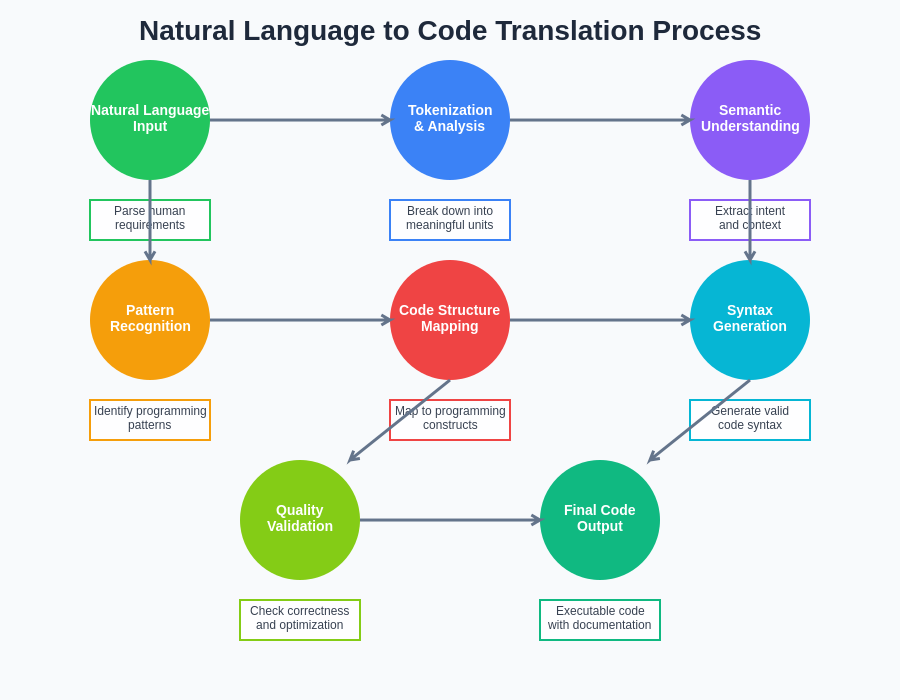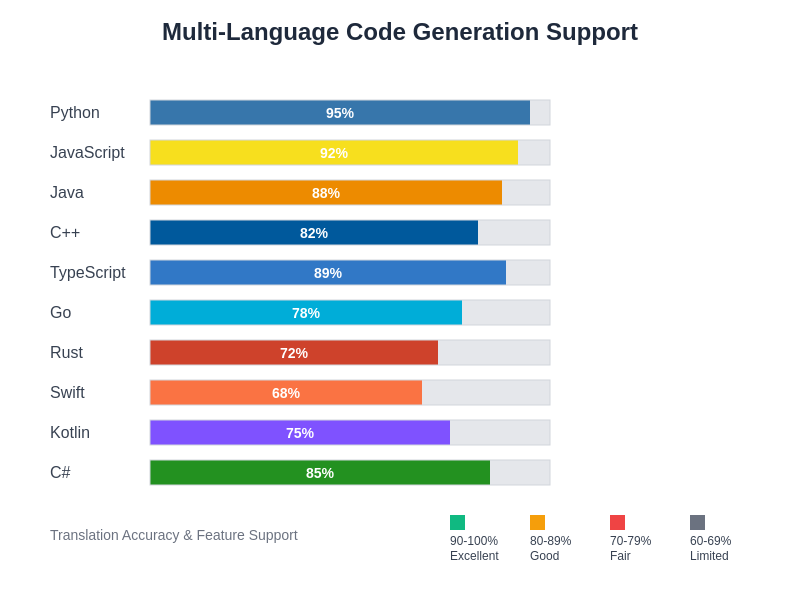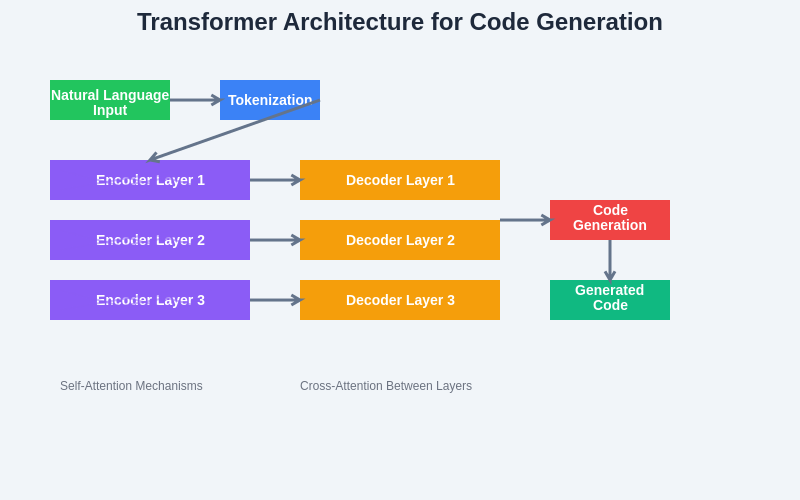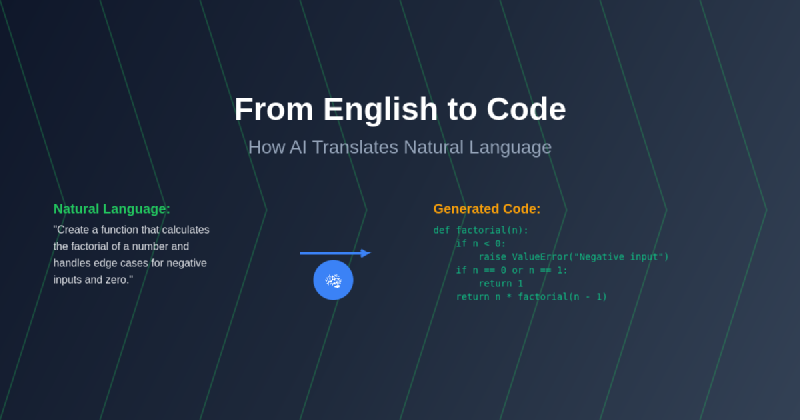The remarkable ability of artificial intelligence to transform human language into executable code represents one of the most significant breakthroughs in computational linguistics and software engineering. This sophisticated process bridges the gap between natural human communication and the precise syntax required by programming languages, enabling developers to express complex algorithmic concepts in everyday language and receive functional code implementations that accurately capture their intended functionality.
Explore the latest AI trends and innovations that are pushing the boundaries of natural language processing and code generation capabilities. The evolution from rigid command-line interfaces to conversational programming environments marks a fundamental shift in how humans interact with computers, democratizing software development and making programming accessible to individuals without extensive technical backgrounds.
Understanding the Translation Process
The transformation of natural language into executable code involves a complex series of computational processes that mirror how humans understand and interpret language. Modern AI systems utilize sophisticated neural networks trained on vast datasets containing millions of examples of natural language descriptions paired with corresponding code implementations. This training enables the AI to recognize patterns, understand context, and generate syntactically correct code that fulfills the specified requirements.
The translation process begins with natural language understanding, where the AI system parses the input text to identify key components such as intent, parameters, data structures, and desired outcomes. The system then maps these linguistic elements to programming constructs, considering factors such as variable declarations, function definitions, control flow structures, and error handling mechanisms. This mapping process requires deep understanding of both linguistic semantics and programming paradigms to ensure accurate translation.
The Architecture of Language-to-Code Systems
Contemporary natural language to code translation systems employ transformer-based architectures that have revolutionized the field of natural language processing. These systems utilize attention mechanisms that allow the model to focus on relevant parts of the input text while generating corresponding code segments, ensuring that complex requirements are accurately captured and implemented in the output code.
The multi-layered architecture processes input through several stages, beginning with tokenization where natural language is broken down into meaningful units, followed by semantic analysis that identifies relationships between concepts, and finally code synthesis where programming constructs are assembled into coherent, executable implementations. This layered approach ensures robustness and accuracy in the translation process, even when dealing with ambiguous or incomplete natural language descriptions.

The systematic transformation from natural language input to executable code involves multiple sophisticated processing stages, each contributing to the accuracy and reliability of the final generated code. This multi-step approach ensures that complex requirements are properly understood and translated into functional programming implementations.
Experience advanced AI capabilities with Claude for sophisticated natural language understanding and code generation that handles complex programming tasks with remarkable accuracy. The sophisticated reasoning capabilities of modern AI systems enable them to understand nuanced requirements and generate code that not only functions correctly but also follows best practices and coding conventions.
Semantic Understanding and Intent Recognition
The foundation of effective natural language to code translation lies in the AI system’s ability to understand semantic meaning and recognize programmer intent. This involves parsing complex sentences that may contain technical jargon, implicit requirements, and contextual references that require deep understanding of both domain knowledge and programming concepts. The AI must distinguish between functional requirements, performance constraints, user interface specifications, and architectural considerations to generate appropriate code solutions.
Intent recognition extends beyond simple keyword matching to encompass understanding of programming paradigms, design patterns, and software engineering principles. When a developer describes wanting to “create a secure user authentication system,” the AI must understand that this involves database integration, password encryption, session management, input validation, and security best practices, translating this high-level concept into comprehensive code implementations that address all these underlying requirements.
Handling Ambiguity and Context Resolution
Natural language inherently contains ambiguities that can lead to multiple valid interpretations of the same statement. AI translation systems must employ sophisticated disambiguation techniques to resolve these ambiguities and select the most appropriate code implementation based on context clues, programming conventions, and likely developer intent. This process involves analyzing surrounding context, considering the target programming language’s idioms, and making informed decisions about implementation details that may not be explicitly specified.
Context resolution becomes particularly challenging when dealing with pronouns, implicit references, and assumed knowledge that developers often include in their natural language descriptions. The AI system must maintain contextual awareness throughout the translation process, understanding how different components relate to each other and ensuring that generated code maintains consistency and coherence across multiple functions and modules.
Multi-Language Code Generation Capabilities
Modern AI translation systems demonstrate remarkable versatility in generating code across multiple programming languages, each with its own syntax, conventions, and paradigms. The same natural language description can be translated into Python, JavaScript, Java, C++, or any number of other languages, with the AI adapting its output to match the target language’s specific requirements and idiomatic patterns.
This multi-language capability requires deep understanding of language-specific features, standard libraries, and community conventions. When generating Python code, the AI employs Pythonic idioms and leverages built-in functions, while JavaScript implementations utilize modern ES6+ features and browser APIs where appropriate. This language-aware translation ensures that generated code feels natural to developers familiar with each specific programming environment.

The effectiveness of natural language to code translation varies across programming languages, with more established languages like Python and JavaScript receiving higher accuracy rates due to extensive training data and mature ecosystem support. This variation reflects the AI system’s familiarity with different language patterns and the availability of high-quality code examples in training datasets.
Advanced Pattern Recognition and Code Structure
The translation process involves sophisticated pattern recognition that enables AI systems to identify common programming patterns and translate them into appropriate code structures. Whether dealing with data processing pipelines, user interface components, or algorithmic implementations, the AI recognizes these patterns and generates code that follows established architectural principles and design patterns.
This pattern recognition extends to understanding relationships between different parts of a software system, enabling the AI to generate code that properly integrates with existing codebases and follows modular design principles. The system can recognize when to create helper functions, how to structure classes and objects, and when to implement specific design patterns that enhance code maintainability and extensibility.
Enhance your AI research capabilities with Perplexity for comprehensive information gathering and analysis that supports understanding of complex programming concepts and emerging technologies. The combination of multiple AI tools creates a powerful environment for exploring the technical details behind natural language to code translation systems.
Error Handling and Edge Case Management
Sophisticated natural language to code translation systems incorporate robust error handling and edge case management capabilities that ensure generated code is production-ready and resilient. The AI must anticipate potential failure points, implement appropriate exception handling, and include validation logic that prevents common runtime errors and security vulnerabilities.
This proactive approach to error handling involves understanding the potential failure modes of different programming constructs and automatically including defensive programming techniques in the generated code. The AI considers input validation, boundary conditions, resource management, and error recovery strategies, ensuring that translated code behaves gracefully under various operating conditions and provides meaningful feedback when issues arise.
Optimization and Performance Considerations
The translation process incorporates performance optimization considerations that ensure generated code is not only functionally correct but also efficient and scalable. AI systems analyze algorithmic complexity, memory usage patterns, and execution bottlenecks to generate code that meets performance requirements while maintaining readability and maintainability.
This optimization process involves understanding trade-offs between different implementation approaches and selecting algorithms and data structures that are appropriate for the specified use case. The AI considers factors such as expected data volumes, concurrent access patterns, and resource constraints to generate code that performs well in real-world deployment scenarios.
Integration with Development Workflows
Modern natural language to code translation systems are designed to integrate seamlessly with existing development workflows and toolchains. This integration involves generating code that follows project-specific conventions, utilizes established dependencies, and conforms to organizational coding standards and architectural guidelines.
The AI systems can understand project context by analyzing existing codebases, configuration files, and documentation to ensure that generated code maintains consistency with established patterns and practices. This contextual awareness enables the translation system to generate code that requires minimal modification and integrates smoothly with existing software systems.
Quality Assurance and Code Validation
The translation process incorporates multiple layers of quality assurance that validate the correctness, security, and maintainability of generated code. This includes syntax validation, semantic analysis, security scanning, and performance profiling to ensure that translated code meets professional development standards and is suitable for production deployment.
Automated testing generation represents another crucial aspect of quality assurance, where the AI system creates comprehensive test suites that validate the functionality of generated code. These tests cover normal operation scenarios, edge cases, and error conditions, providing developers with confidence in the reliability and correctness of the translated implementations.
Learning and Adaptation Mechanisms
Advanced translation systems incorporate learning mechanisms that enable them to improve their performance over time by analyzing feedback, studying successful translations, and adapting to new programming paradigms and technologies. This continuous learning process ensures that the AI stays current with evolving programming practices and emerging technologies.
The adaptation mechanisms involve analyzing developer modifications to generated code, identifying common patterns in these modifications, and incorporating these insights into future translations. This feedback loop creates a self-improving system that becomes increasingly accurate and useful as it gains experience with different types of programming challenges and developer preferences.
Future Developments and Emerging Capabilities
The field of natural language to code translation continues to evolve rapidly, with emerging capabilities that promise even more sophisticated translation accuracy and expanded functionality. These developments include improved understanding of software architecture principles, enhanced debugging and optimization capabilities, and more sophisticated integration with development tools and platforms.
Future systems are expected to incorporate more advanced reasoning capabilities that enable them to understand complex business logic, architectural requirements, and system integration challenges. These advancements will further bridge the gap between natural language expression and technical implementation, making software development more accessible and efficient for developers at all skill levels.

The transformer-based architecture underlying modern natural language to code translation systems employs sophisticated attention mechanisms and multi-layered processing to achieve remarkable translation accuracy. This architectural foundation enables the AI to maintain context across complex requirements while generating syntactically correct and semantically meaningful code implementations.
Real-World Applications and Impact
The practical applications of natural language to code translation extend across numerous domains, from web development and mobile applications to data science and system administration. These systems have democratized programming by enabling subject matter experts to create software solutions without extensive programming knowledge, while simultaneously enhancing the productivity of experienced developers.
The impact on software development practices has been profound, enabling rapid prototyping, accelerated learning curves for new programming languages, and more efficient collaboration between technical and non-technical team members. Organizations have reported significant improvements in development velocity and code quality when incorporating AI-powered translation tools into their development workflows.
Challenges and Limitations
Despite remarkable advances, natural language to code translation systems still face significant challenges in handling highly complex requirements, understanding implicit domain knowledge, and generating code for specialized or emerging technologies. These limitations require ongoing research and development to expand the capabilities and reliability of translation systems.
Current challenges include maintaining context across large software projects, understanding performance requirements that may not be explicitly stated, and generating code that integrates seamlessly with complex existing systems. Addressing these challenges requires continued advancement in AI reasoning capabilities and more sophisticated understanding of software engineering principles.
Best Practices for Effective Translation
Maximizing the effectiveness of natural language to code translation requires understanding how to communicate requirements clearly and provide appropriate context for the AI system. This involves using precise language, providing relevant examples, and structuring requests in ways that facilitate accurate interpretation and code generation.
Effective practices include breaking complex requirements into smaller, manageable components, providing context about the target environment and constraints, and iteratively refining descriptions based on initial translation results. These approaches help ensure that the AI system generates code that closely matches developer intent and requires minimal modification.
The evolution of natural language to code translation represents a fundamental shift in how software is created, moving toward a future where the barrier between human intent and machine implementation becomes increasingly transparent. This transformation promises to accelerate innovation, democratize software development, and enable new forms of human-computer collaboration that were previously impossible. As these systems continue to evolve, they will undoubtedly play an increasingly central role in shaping the future of software engineering and computational problem-solving.
Disclaimer
This article is for informational purposes only and does not constitute professional advice. The views expressed are based on current understanding of AI technologies and natural language processing capabilities. Readers should conduct their own research and consider their specific requirements when implementing AI-powered development tools. The effectiveness of natural language to code translation may vary depending on specific use cases, programming languages, and complexity of requirements.
